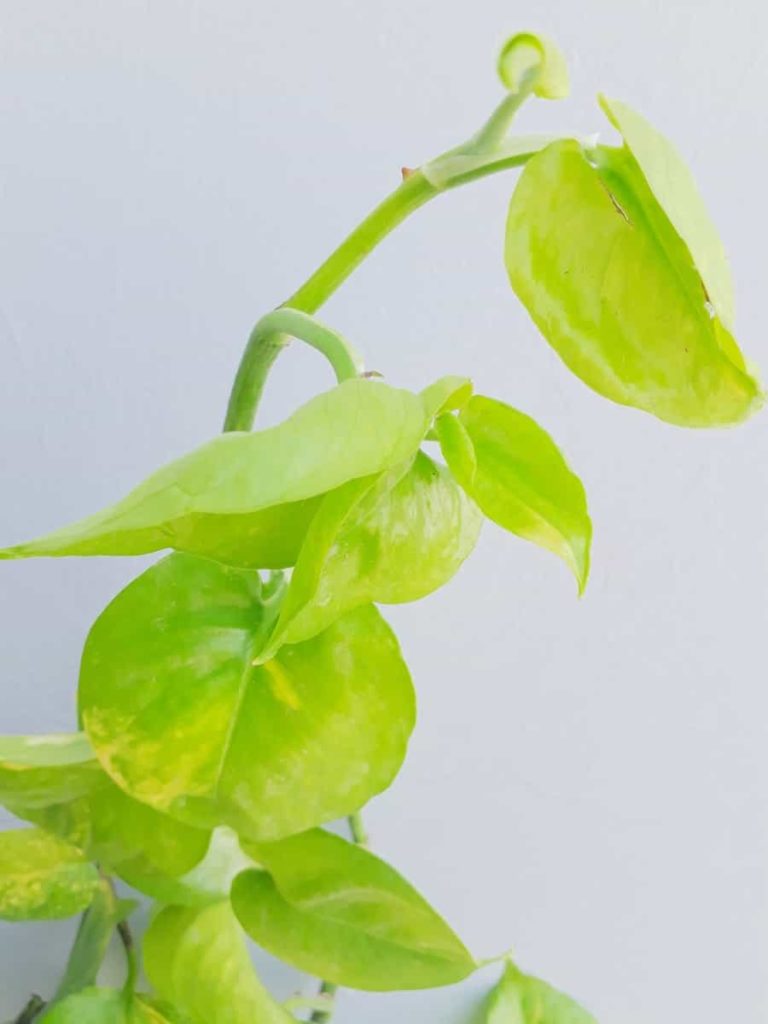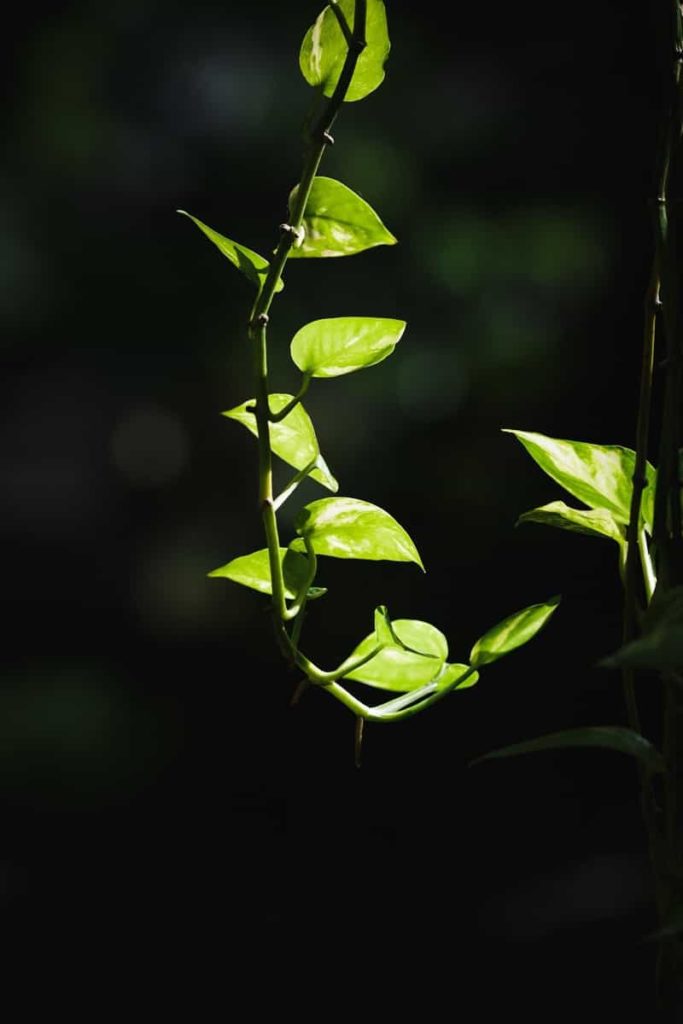The Devil’s Ivy plant, also called Pothos, is a tropical, evergreen vine that grows indoors and outdoors as a hardy, carefree houseplant. The devil’s ivy, also known as marble queen, hunter’s robe, and Ceylon creeper, is a species of flowering plant in the Araceae family. Various cultivars have light green, yellow, or white variegations, making them trendy ornamental houseplants in temperate climates. Because devil’s ivy vines are easy to maintain, they are often seen in public places such as offices and shopping centers.
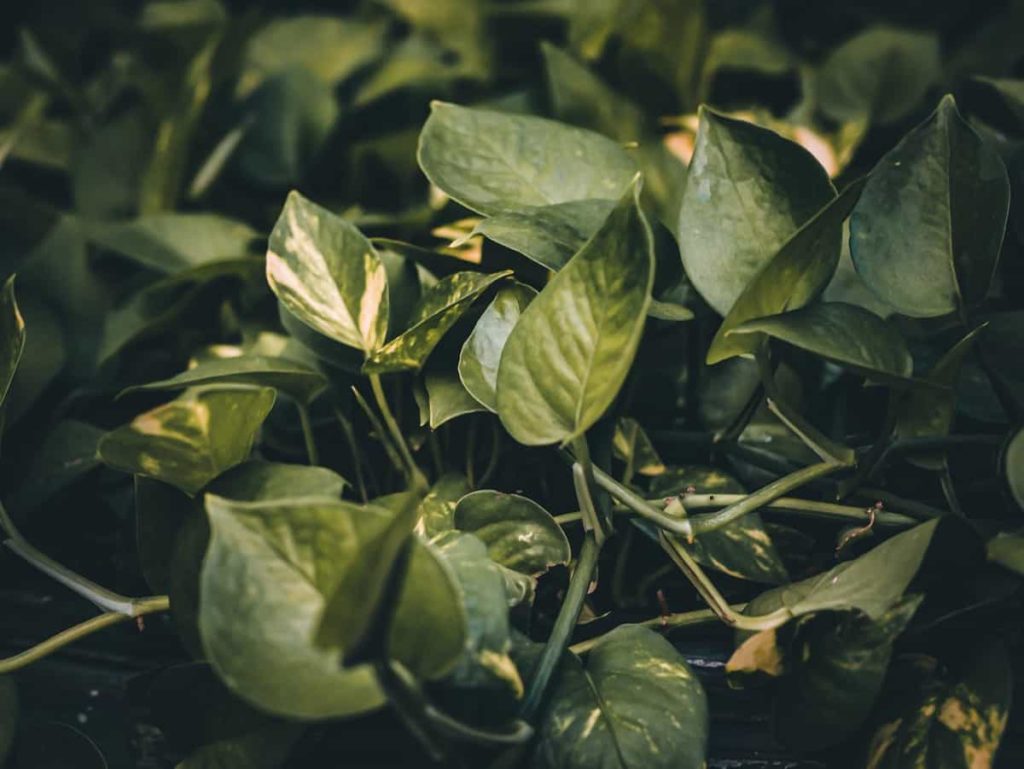
However, growing them in parks and gardens is also possible, especially in tropical areas. In winter, this plant may freeze to the ground, but it usually sprouts again in spring. Planting Devil’s Ivy indoors or outdoors is simple, and it is relatively pest- and disease-free, so even black-thumbed gardeners should be able to succeed. Unfortunately, however, it thrives on neglect as well. Let’s check out how to grow and care for Devil’s Ivy below.
Devil’s ivy is a fast-growing vine whose length depends on whether it is grown indoors or outdoors. If left unpruned, it can reach a maximum height of 40 feet in the landscape, whereas indoor plants typically reach six to eight feet. It is waxy, heart-shaped foliage variegated with yellow and green, and the size of the leaves varies from location to location. On outdoor plants, leaves can grow up to 30 inches long, while indoor plants may have left only 4 inches long. Plants indoors rarely bloom, but when planted outdoors, the vine produces erect, 6-inch green spathes surrounding tiny flowers.
How to grow and care for Devil’s Ivy
Types in Devil’s Ivy
The market currently only offers a handful of popular cultivars out of various cultivars. Despite their identical care requirements, their leaf markings make them more appealing. You can fill your devil’s ivy jungle with these cultivars by using a variety of them.
Golden
Golden devil’s ivy has heart-shaped emerald green leaves streaked and splashed with creamy gold. Devil’s ivy of this variety is the most common. The leaves can revert to solid green in lower light conditions. However, in warm, bright conditions, the leaves of a totem grow pretty significant for a tropical effect. White and gold splashes on the leaves make this variety so attractive.
Marble queen
It has heart-shaped green leaves and abundant creamy-white variegation, similar to other varieties of devil’s ivy. The leaves of these plants are smooth and marble-like, with white and green interwoven to form beautiful variegation. Each leaf is unique, and each stem may exhibit more or less variegation depending on the plant from which it was propagated. When propagating your plants, choose cuttings from highly variegated parent plants.
In case you missed it: How to Make Cow Dung Manure Compost: A Step-by-Step Guide to Use in Your Farm/Garden
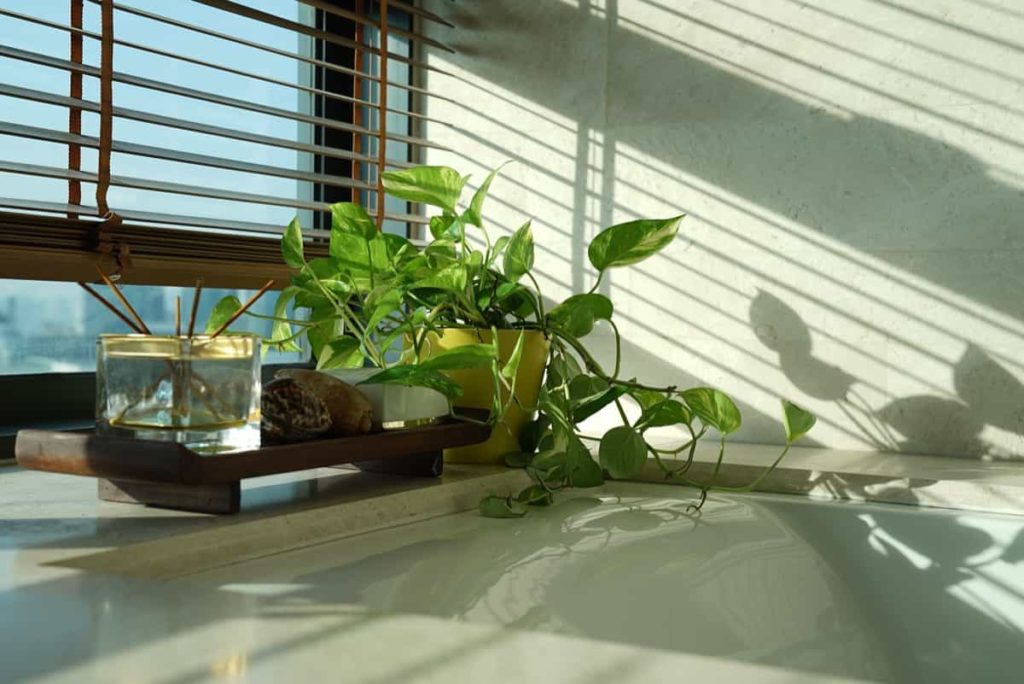
Neon
A distinctive characteristic of neon devil’s ivy is its solid golden-chartreuse, heart-shaped leaves. Younger leaves have a more intense color, taking on a deeper shade as they age. The foliage has no variegation. For this variety to develop its full coloration, bright light is required. As the light level drops, the leaves become duller and darker. The foliage of this neon devil’s ivy is lime-green and bright. Recently, it has become one of the famous varieties.
Jade or pearls
One of the most eye-catching varieties is Pearls and Jade, which originated with marble queen. Small, white-edged, gray-green leaves are variegated with cream, gray, and white. It is common for the white sections to mix flecks of other colors. Compared to other varieties, it is smaller and grows more slowly. Jade devil’s ivy is an easy-to-grow, beginner-friendly house plant. A low-light plant that tolerates more extended periods between waterings thrives in low-light conditions.
Manjula
There are different shades of white, silver, cream, and light green on each leaf. It grows broad, heart-shaped green leaves with wavy edges and various variegation. Many leaves have large patches of green, while some are heavily flecked and splashed. The green patches cover many leaves, while others are heavily flecked and splashed with color. With stunning marbled and blotched patterns and white variegation, it looks like the love child of the marble queen.
Jessenia
Jessenia Devil’s Ivy leaves are heart-shaped and richly variegated with chartreuse. The leaves of this plant are unique, and it is closely related to the marble queen variety. The color of the markings differs between the two varieties. A marble queen will have white markings, while a Jessenia devil’s ivy will have lime green markings. Slow growth is also a characteristic of Jessenia.
Global green
The leaves of Global Green are mottled in dark and light-green marbled variegation. Global Green pothos differs from older green-on-green variegated selections by separating the colors on the leaf, with a darker green on the outer parts and a lighter green in the middle. Maintain the leaf pattern’s integrity by keeping this one in bright light.
Glacier
Glacier variety is compact and highly variegated. It has striking green leaves with white variegation flecked with silver and gray. The leaves can sometimes be asymmetrical. The growth rate of this plant variety is slower than other varieties of Pothos due to its highly variegated appearance. Glacier pothos is an excellent option for tabletop and desktop displays because of its decorative variegation, slow growth rate, and compact habit.
How to grow Devil’s Ivy
Devil’s ivy is an easy-to-grow, low-maintenance vine. The plant thrives on neglect, and even black-thumbed gardeners can grow it. Furthermore, this plant can be grown indoors as well as outdoors. It can grow in a hanging basket, a wall planter, or a tabletop pot. A living wall can be created using it. Adding it to any dull space will brighten it and make it look like a work of art. To grow devil’s ivy indoors or outdoors, follow these steps:
Choose plant variety
Select the variety you want to grow, whether marble queen or satin. Ensure the plant has glossy, crisp leaves. You are purchasing a potential problem when the plant looks dryish and droopy.
In case you missed it: How to Compost Kitchen Waste with Worms: A Guide to Kitchen Vermiculture
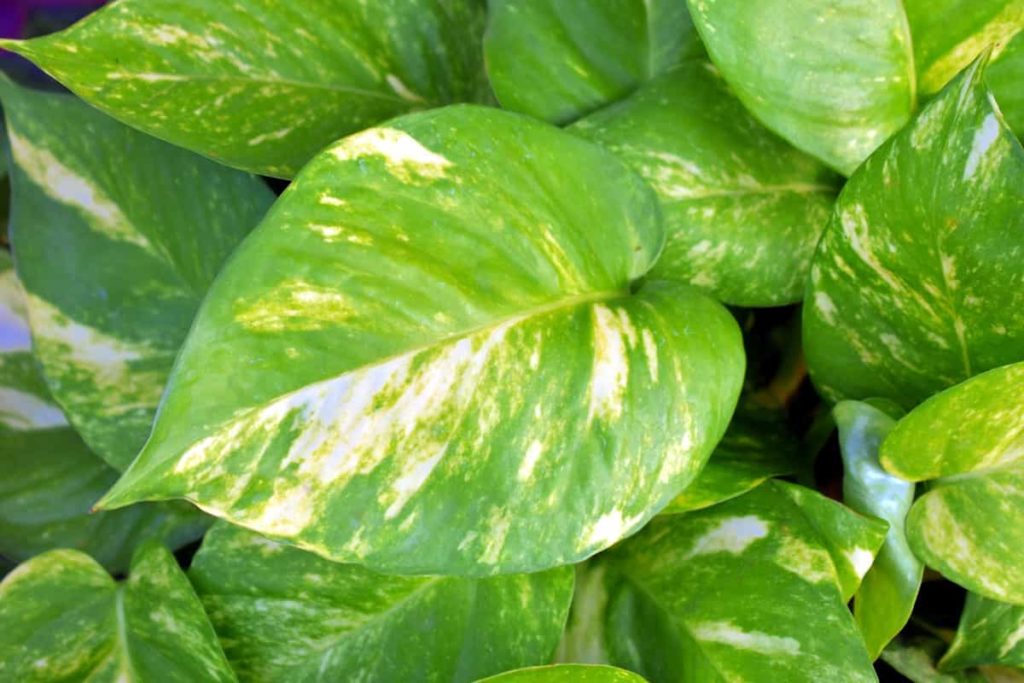
Pick the right planter/pot
Devil’s ivy can grow enormously, even in small spaces. Therefore, a giant planter is not necessary. It would be best if you chose a planter suitable for your living room or garden and one you are comfortable with it. Ensure that the planter has adequate drainage holes. Soggy soil is not a suitable environment for this plant.
Fill the pot with the suitable soil
Fresh potting soil should fill 2/3 of your pot. Any ordinary, well-draining potting soil will work for this plant. In this planter, however, a high-quality potting mix is used to ensure healthy plant growth. It is preferable to have slightly acidic soil, but it is unnecessary. There is also the option of growing this plant in a peaty potting mix.
Gently pull the plant and plant it in the new pot
Remove the plant from its container, gently tease its roots, and cut any tangled or circled roots. You can encourage new shoots by pruning the foliage lightly.
Grow your plant
Place the plant in the middle of the pot and backfill with potting mix, firming it down gently. Water sufficiently. Gently tease the root ball after covering it with soil. Remove any tangled roots to promote better growth. Avoid exposing the plant to the afternoon sun. The heat from the afternoon sun will burn the leaves if it is exposed. When the top layer of soil dry, water it. You shouldn’t feed it more fertilizer than once a month.
Providing support for climbing
As the devil’s ivy grows and becomes more extensive, you will also need to support it. Encourage growth by climbing a trellis or stake. You can drape it over arches or make a beautiful green bower with devil’s ivy.
Devil’s Ivy care
Soil
Devil’s ivy thrives outdoors in soils ranging from acidic to alkaline and occasionally tolerates wet conditions. If you are growing it in containers, an all-purpose, peaty potting mix that drains well will suffice. Pothos plants can not tolerate sitting in water, so their pots must have drainage holes. Ensure your potting mix contains a good amount of perlite and composted forest products. A lot of peat moss can cause excess moisture to be retained, which can be a problem.
Light
Bright, indirect sunlight is ideal for all pothos varieties. The bright light will allow the color to reach its deepest level, which is especially important for variegated varieties. Bright light is still the best for all neon cultivars, even solid neon cultivars. Even in low light, the devil’s ivy grows well, but not in complete darkness. Plants will still live and grow slowly under low-light conditions despite variegation reverting to solid green. There is a possibility that this plant’s leaves will drop if the lighting is severely lacking.
Feeding
Growing devil’s ivy requires fertile soil with plenty of nutrients, but it can also thrive in lean soils if it receives regular fertilization. Potting soil provides an initial feeding, but after about a month, you will need to supplement it with additional nutrients.ts. Organic fertilizers, liquids, and granular fertilizers work well on Pothos.
In case you missed it: How to Prevent Insect Pests in Vermicomposting: Tips, Ideas, and Techniques for Maggots, Fruit Flies
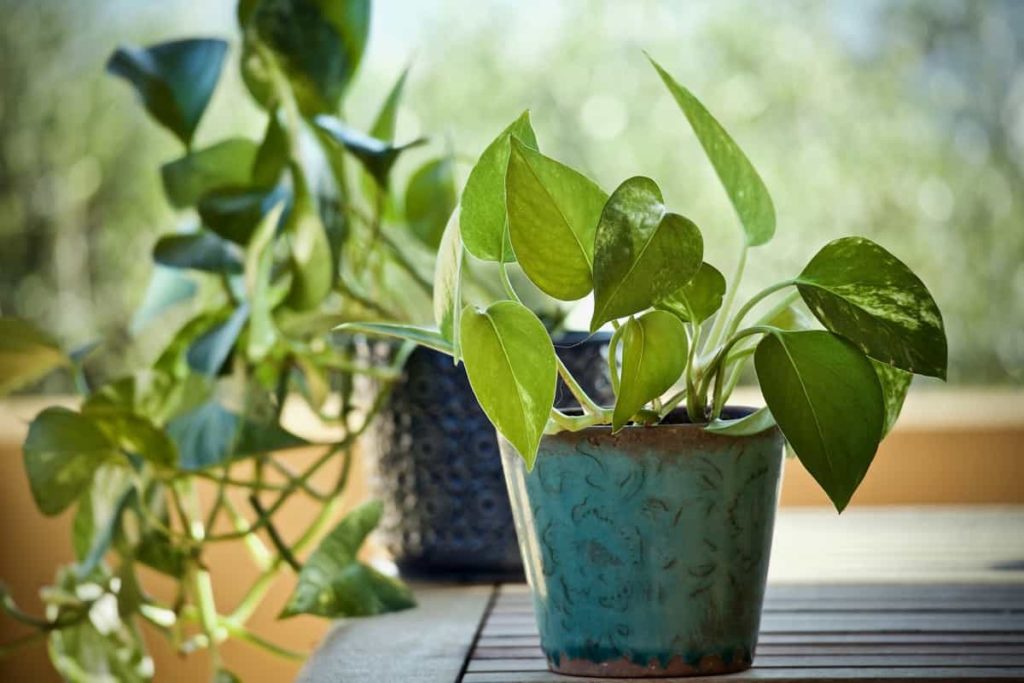
It is an excellent thought to fertilize more frequently to maintain a consistent supply of nutrients, but do not overfertilize. Use a general-purpose liquid houseplant fertilizer on both indoor and outdoor plants. It should be sufficient to apply one or two applications throughout the growing season. The specific amount and application instructions should always be followed according to the label.
Watering
Although it prefers moist soil, devil’s ivy is highly drought-tolerant. Even though it can grow best in moist soil, don’t keep the soil constantly wet. Too wet soil conditions can cause root rot. Yellow leaves on devil’s ivy are usually a sign of overwatering. Grow the vine in planters or hanging baskets with drainage holes at the bottom to prevent the problem. During the growing season, indoor plants should be watered approximately once a week. When this plant is dormant in winter, water it about once every two weeks. Water should be applied until it runs out of the bottom drain holes.
Temperature and Humidity
At average room temperatures and humidity levels, devil’s ivy grows well. Most houseplant owners, however, move their plants outside during the growing season and back inside during the winter. Leaving Pothos outdoors or in an unheated room where the temperature will drop below 13°C is never recommended.
As long as the pothos plant is not exposed to direct sunlight, summertime high temperatures are generally acceptable. However, it is common for pothos plants to develop brown leaf tips when the humidity in a heated home drops in the winter. Use a tray filled with pea gravel and water to increase humidity around the plant, or mist this plant regularly with a spray bottle.
Landscape and indoor uses
Devil’s ivy is helpful in the landscape for a variety of reasons. Use it as a ground cover or climb it on a tree for a tropical effect. Use it on a fence or hang down a wall. Devil’s ivy grows aggressively, so don’t plant it near shrubs or hedges. Vine plants quickly grow into shrubs or hedges, eventually taking over. Keeping devil’s ivy within a boundary requires frequent pruning when used as a ground cover.
Climbing
In their natural habitat, these plants love to climb. Coco fiber totem poles create a stunning upright look and give the roots an aerial appearance. Using hooks, you can help the devil’s ivy climb a wall or piece of furniture.
In case you missed it: Vegetable Seed Germination Chart: A Calendar to Time and Soil Temperature
Design ideas
Designing outdoors
- The vine works well as a ground cover or accent when grown outdoors in its preferred climate. A tree trunk covered with devil’s ivy is a spectacular sight.
- Alternatively, place a pot of Devil’s Ivy next to the tree’s trunk or plant it directly in the ground. A single, bare trunk palm tree like a cabbage palm looks attractive growing up.
- A vine growing up a trellis or arbor also gives any outdoor space a tropical feel. Hanging pots or trailing over pot edges can also be attractive.
Designing indoors
It is easy to care for, and lush leaves make it a popular houseplant. This plant can be used almost anywhere in the house because of its greenery. As an added benefit, it’s an air purification plant that can be added to your indoor space.
- A Devil’s ivy plant can liven up a window, a bright bathroom, or an indoor space. It’s like bringing the tropics inside.
- Devil’s ivy grows well in hanging pots or regular pots as a houseplant. Please put it in a white pot and elevate it off the ground so the vines can flow out.
- Plant cuttings in a water-filled container and add a touch of green to a counter or shelf.
Propagating devil’s ivy
- Stem cuttings and divisions are easy ways to propagate devil’s ivy.
- Trim a stem 4-6 inches (10-15 cm) long below a leaf node. There should be at least four leaves and two growth nodes on the stems.
- Soil or water can be used to plant the cuttings.
- It is difficult for devil’s ivy vines to adapt to a new environment. Therefore, you should choose from the outset the environment your new baby plant will live.
Choose a container with drainage holes, and plant the cutting in the fresh potting mix if you want to grow your devil’s ivy in the soil. The process of propagating a devil’s ivy cutting in water is similar. Tiny roots will appear after a month or two. If you choose this propagation technique, you should change the water every two or three weeks.
To propagate devil’s ivy vines through division, you must remove them from their containers. Cut the root ball into segments after removing the excess soil around it. The cuttings should be planted in fresh soil, leaving a space of 1-2 inches (2-5 cm) around their roots. Maintain them as usual by watering and caring for them.
Pruning Devil’s Ivy
Even though cutting off devil’s ivy shoots is unnecessary, this tropical plant is tolerant of pruning. Regularly remove dead and wilted leaves. You can always reach for the secateurs if you want to curtail the growth of the devil’s ivy. The best time to trim devil’s ivy is spring when it can grow back healthy.
In case you missed it: Minnesota Vegetable Planting Calendar (MN): Month Wise Garden Guide for Fall, Winter, Spring, Summer, Zone 3, Zone 4, Zone 5, Zone 6, and Zone 7
Two-thirds of the shoots should be pruned back. The cut-off shoots can be used to propagate devil’s ivy. Plants with bushier foliage can be pruned directly at the leaf nodes. Growing several devil’s ivy plants in one pot is the easiest way to achieve the bushy shape.
Conclusion
Despite their low maintenance and easy-going nature, devil’s ivy plants are prevalent in tropical and temperate regions. Both indoors and outdoors, they are perfect for beginners or busy gardeners. For these vines to thrive, they need an environment that can simulate their native habitat conditions, such as bright, indirect light, warm temperatures, high humidity levels, suitable potting soil, and occasional watering. Moreover, they can fill any place with their graceful waves of leaves, purifying the air as a sign of gratitude.
- Management Pests and Diseases in Your Cotton Field
- Sheep Farming Business Plan for Beginners
- Aquaponic Farming at Home: A Step-By-Step Guide
- Profitable Village Farming Business Ideas in 2024
- High-Yield Aquaculture: Fast-Growing Fish for Farming
- Effective Fish Pond Construction Techniques for Beginners
- Irrigation and Water Management in Pineapple Farming
- Blossom to Harvest: Mastering Flowering and Pollination in Papaya Farming
- Pig Fattening Essentials: From Selection to Sale for Beginners
- Raising Wagyu Cattle: A Complete Guide for Premium Beef Production
- Soil Types and Their Water Holding Capacity
- Optimizing Irrigation Schedules for Coconut Groves for Enhanced Yield
- Espresso Your Garden: Coffee Grounds for Healthier Acid-Loving Plants
- The Best Soil Mix for Snake Plants: How to Mix Your Own Snake Plant Soil
- Green Thumb Success: Expert Tips for Cultivating Greenhouse Beans All Year Round
- Bloom All Year Round: The Ultimate Guide to Indoor Hyacinth Care
- Eco-Friendly Gardening: How to Make Liquid Fertilizer from Kitchen Waste
- Ultimate Guide to Grow Anise in Pots: Explore Seed Propagation to Harvesting
- Guide to Raising Chester White Pigs: Discover Breed Facts to Growth Management
- Mastering the Elegance: The Ultimate Guide to Weeping Cherry Tree Care, Planting, and Maintenance
- Ultimate Guide to Planting Garlic in Grow Bags: Growing Strategies for Beginners
- How to Fix Spider Plant Leaf-Related Problems: Natural and Organic Remedies
- 10 Reasons Why Your Tulsi Plant is Shedding Leaves: Home Remedies and Solutions
- Optimizing Growth and Yield: The Advantages of Palm Bunch Ash Fertilizer
- Utilizing Neem Oil Extract as a Natural Pesticide for Hydrangea
- From Soil to Harvest: Various Ways in Which Farmers Can Use AI Tools
- Steps to Encourage and Induce Citrus Flowers: A Comprehensive Guide
- How to Fix Snake Plant Leaf-Related Issues: Natural and Organic Remedies
- Transform Your Garden into a Fragrant Oasis with Raat Ki Rani (Night Blooming Jasmine)
- Discover the Ideal Chicken Breeds for Philippine Farms
- How to Create a Poultry Egg Farm Business Plan for Profits
- Grow Lemon Cucumbers Like a Pro: Insider Techniques for Bountiful Yields
- Ultimate Guide to Caring for Your Pink Princess Philodendron: Tips for Thriving Variegation
- Areca Nut Profit Per Acre: Calculating Yield and Cost of Cultivation
- How Kaveri Chicken is Becoming a More Profitable Breed in Indian Backyards
- Transform Your Barn: 9 Steps to Convert a Horse Stall into a Chicken Coop

